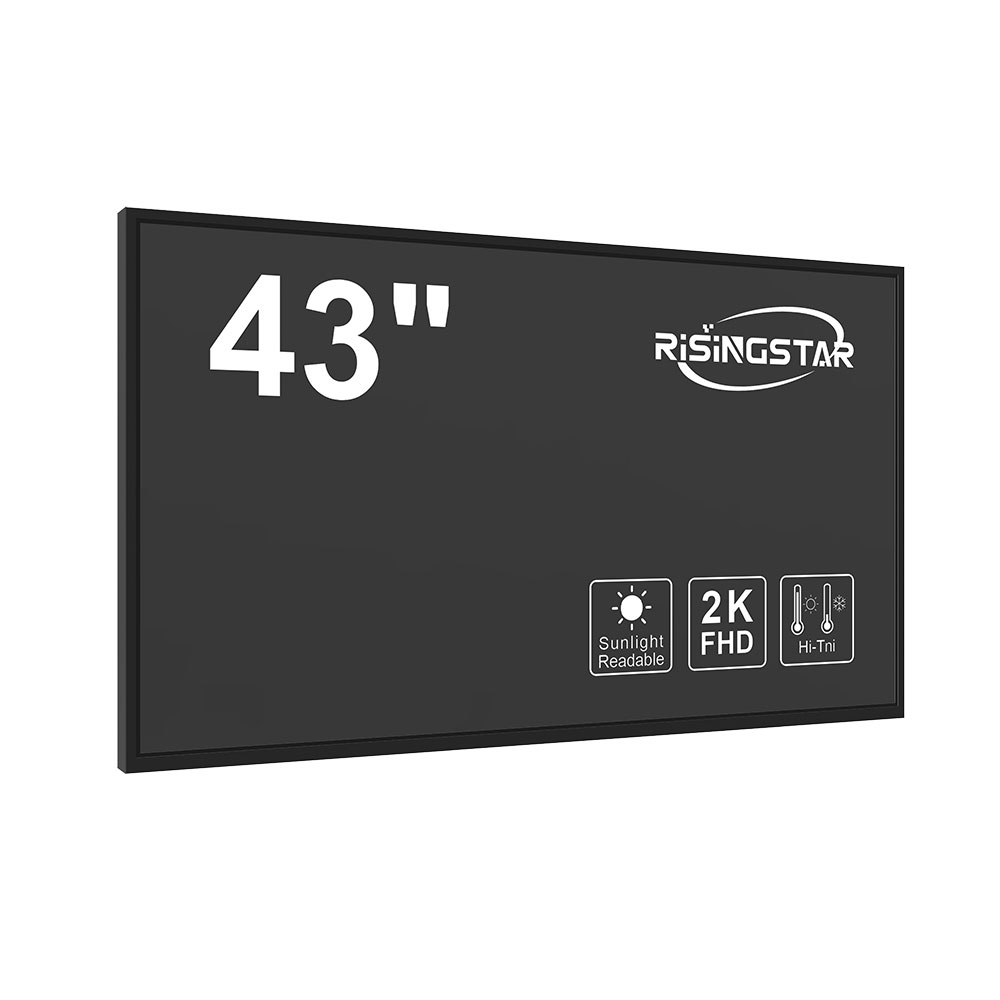- Home
- About Us
- Products
- News
- Video
- Contact
- Send Inquiry
Search
- Home
- About Us
- Products
- News
- Video
- Contact
- Send Inquiry

Outdoor high-brightness LCD displays have become a critical component in modern public transportation infrastructure, particularly in passenger information systems (PIS). These systems are deployed across airports, train stations, bus terminals, and metro networks to provide real-time updates on schedules, delays, safety alerts, and service changes. To ensure visibility under direct sunlight and varying weather conditions, outdoor LCDs must exceed 5,000 nits of brightness—far beyond standard indoor displays that typically max out at 300–500 nits. According to the International Electrotechnical Commission (IEC) standards (IEC 60950-1), outdoor displays used in transit environments must also meet IP65 or higher ingress protection ratings for dust and water resistance, ensuring reliable operation in rain, snow, and extreme temperatures ranging from -30°C to +60°C.
Common display sizes such as 15", 17", and 19" are widely adopted in PIS installations due to their optimal balance between visibility, space constraints, and cost efficiency. A 15" screen is often used in compact kiosks or handheld devices, while 17" and 19" models dominate wall-mounted digital signage in platforms and concourses. The 4:3 aspect ratio remains preferred over 16:9 for PIS because it aligns better with traditional text-based content, supports legacy software interfaces, and provides more vertical space for scrolling information like arrival times, platform numbers, and emergency messages. For instance, London Underground’s updated PIS system utilizes 19" 4:3 outdoor-grade LCDs with laminated anti-glare coatings and LED backlighting to maintain readability even during peak sun hours.
Manufacturers such as LG Electronics, Samsung Display, and Leyard (a subsidiary of Christie Digital) produce ruggedized outdoor LCD panels specifically engineered for transit applications. These units incorporate features like wide viewing angles (178° horizontal/vertical), integrated thermal management (heat sinks and fans), and redundant power supplies for fail-safe operation. Case studies from New York City Transit Authority show a 40% reduction in passenger complaints after upgrading to 17" 4:3 displays with adaptive brightness control that automatically adjusts based on ambient light sensors—an approach aligned with ISO 13406-2 guidelines for human-machine interface design.

Additionally, outdoor PIS displays often integrate with cloud-based content management systems (CMS) via Ethernet or 4G/LTE connectivity, allowing remote updates without physical access. This is essential for dynamic scheduling in cities like Tokyo or Singapore where frequent service changes require instant communication. Security is another priority—many systems now include tamper-proof enclosures and encrypted firmware updates to prevent unauthorized access, especially in high-risk urban areas.
In conclusion, selecting the right outdoor LCD display for passenger information systems involves balancing brightness, size, aspect ratio, durability, and integration capabilities. The 15", 17", and 19" 4:3 formats remain industry favorites due to proven performance in real-world deployments across multiple continents. With continued advancements in LED technology, AI-driven brightness optimization, and IoT-enabled monitoring, these displays will play an increasingly vital role in enhancing traveler experience and operational resilience in smart cities worldwide.